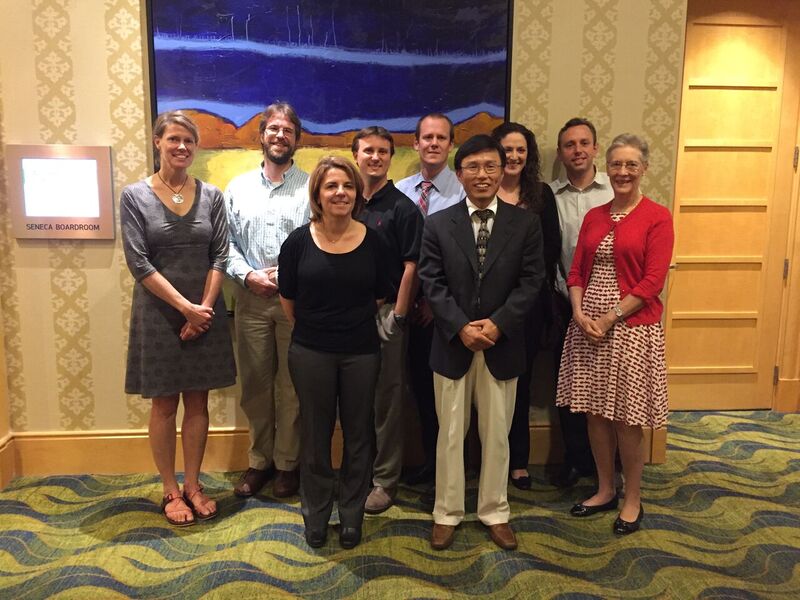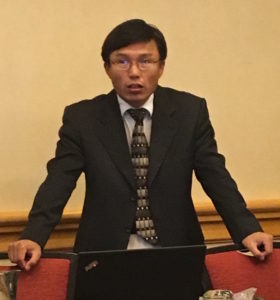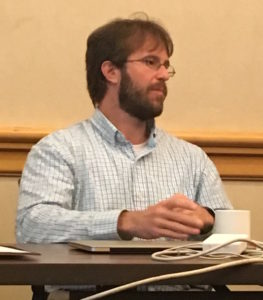After three months of fundraising, relearning science on a cellular level, and lots of logistical planning, the Talia Duff Foundation hosted the first meeting of world-experts in CMT4J in Bethesda, MD at the end of September.
Before hopping on the plane to Bethesda, I was filled with anticipation and a bit of disbelief that this extraordinarily smart and accomplished group of people were about to devote their weekend and attention to our foundation and its mission. Walking back from dinner the night before, however, Dr. Steven Gray from UNC Chapel Hill, one of the world’s foremost experts in viral vectors, gently tapped me on the shoulder and said, “I hope you realize you are hosting the world’s first-ever symposium on Charcot Marie Tooth Disease Type 4J.” Needless to say, this put me at ease and I took that moment to reflect and be grateful. So many people worked tirelessly to get us to that meeting. From our core team and board members, to all the members of our community, family and friends who so generously donated to our foundation, we got there together.

Left to Right: Jocelyn Duff, Guy Lenk, Cat Lutz, Steve Gray, Shane, Jun Li, Victoria, Tom Lloyd, Cynthia Tifft
Missing: Tom Crawford (Johns Hopkins), Robert Burgess (Jackson Labs)
The next day the “symposium” was underway, with each expert presenting on their particular area of expertise. They shared past and present research freely and enthusiastically agreed to serve on our team of Scientific and Medical Investigators. They agreed to work – together – on a directed treatment/cure for CMT4J.
And they did so, because behind the sweet faces and heart-wrenching stories of Ethan and Talia’s battle with this disease these experts believe in the science. These scientists and clinicians believe that gene therapy offers a potential cure for Talia, Ethan, and so many others suffering from diseases caused by single gene mutations.
John and I are so profoundly grateful and proud to share the names of the impressive individuals who make up the Talia Duff Foundation’s scientific and medical team:

Dr. Jun Li.
-
• Jun Li, MD, PhD – Vanderbilt University
• Steven Gray, PhD – UNC Chapel Hill
• Tom Lloyd, MD, PhD – Johns Hopkins University
• Cynthia Tifft, MD, PhD – National Institutes of Health
• Catherine Lutz, PhD, – Jackson Laboratories
• Robert Burgess, PhD – Jackson Laboratories
• Guy Lenk, PhD – University of Michigan
• Tom Crawford, MD, PhD – Johns Hopkins
Already this team is fast at work. The viral vector is being created and the folks at Jackson Laboratory, in Bar Harbor, Maine are getting ready to begin pre-clinical trials. Scientists from University of Michigan and Johns Hopkins are looking more closely at the FIG4 gene involved with CMT4J to see if they can somehow truncate, or clip, unnecessary parts of it, so that we can possibly “double-dose” each virus to deliver an even higher concentration of healthy gene to the cells.

Dr. Guy Lenk.
The driving force for getting to our first milestone so quickly was the state of Talia’s health. She has lost so much over the years—a lot over the past year. I wonder if people forget that my sweet girl used to walk holding on to just one of my fingers. I wonder if people forget that she used to walk the length of a football field in her bright, yellow walker. I see pictures of her as a baby, a toddler, a little girl with her arms raised up high in a gesture of joy.
Now, there is no walker. An ill-fitting, black wheelchair stands in its place. She has not been able to climb up onto anything for several years. She has lost the strength in the muscles in her upper arms and shoulders. She asks me for “a thousand hugs” every day now, and I have to lift and position her arms around my body, holding them up in an embrace, because she cannot.
No one else is working on a treatment for CMT4J. Our team of experts believes in the science. Now we need your help in funding the path to prove it and to get to clinical trials. Talia, Ethan and the growing list of others that we’ve recently learned of with CMT4J–in Washington, Illinois, Ohio, Vancouver, New York, the UK, Australia—they have no other hope. We need to stop and reverse the horrible effects of this disease for each of them.
Please share word of Cure CMT4J far and wide on your social feeds and ask your network to donate here. Thank you.

Recent Comments